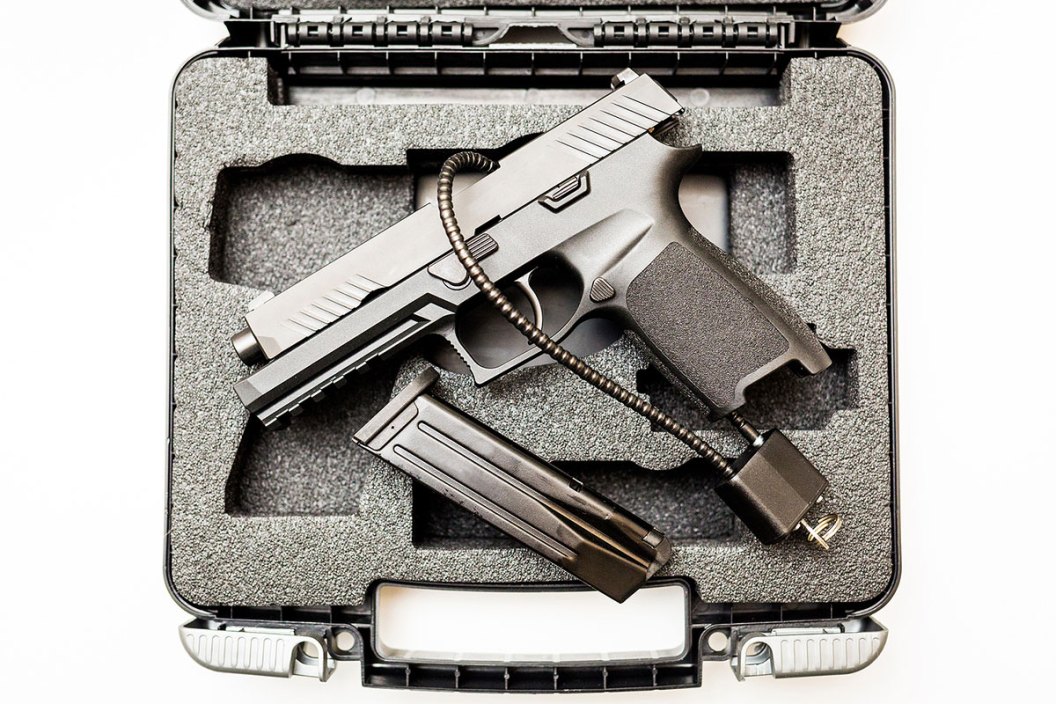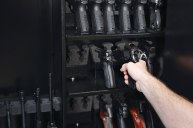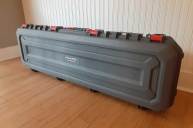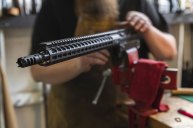Proper and safe gun storage is the responsibility of all gun owners, and there are a lot of great ways to do it.
Things are much different in the United States than they were in decades past in a whole lot of ways, and that certainly includes how guns are treated.
Back in the '50s, the term safe storage didn't really mean anything in the gun world. Gun owners, especially in families that hunted a lot, kept guns around the house, perhaps in a gun cabinet, or on a gun rack over the mantle, or leaning against the wall inside the coat closet.
Only those with extensive, or particularly expensive, gun collections bothered with a gun safe.
But just like there were no seatbelts in the '50s, times have changed. Gun ownership comes with the responsibility of employing safe gun storage practices and taking the matter seriously; it's now viewed as just as important as all other aspects of gun safety, and appropriately so.
Correct and safe firearm and ammo storage is the best way to prevent a tragic accident or unintentional shooting. Just because you've learned the proper tenets and go about gun storage the right way, doesn't mean a family member or anyone else has learned proper gun safety training or knows how to safely handle a firearm.
Here's a quick run down of storage options for gun owners today.
NOTICE: Some states and municipalities have gun storage laws on the books. Always check your local laws to be sure you store guns in a law-abiding manner.
Gun Safes
A solid gun safe is the best and most robust method to securely store firearms while keeping them about as protected as they can be. Modern gun safes can be as bare bones or as swanky as you desire, with many offering internal lighting, dehumidifiers, and other amenities in a package that will not only keep people and burglars and unauthorized persons away from guns, but also protect them in the event of fire or flood.
Some gun safes are built to hold dozens of firearms and accessories, while others are designed with self-defense and home defense in mind. There are a number of single-gun, quick-access gun safes, especially for handguns, that allow gun owners to get to their defensive firearms in a hurry, while still maintaining firearm safety at all other times. They are a far better and safer alternative to keeping a handgun on a nightstand or in a bedside drawer. Some even have biometric locks so you don't have to remember a combination when woken by a bump in the night.
On-Gun Locking Devices
These days, pretty much all new firearms come with a simple cable lock, which won't do much against theft but are certainly effective enough to keep an unauthorized person from operating a firearm. Typically, the cable is passed through the action and locked so the firearm cannot be loaded, cycled, or operated.
The older version of these cable locks are the classic trigger locks, which do exactly what they sound like they do: they fill up the trigger guard of a handgun or long gun, preventing access until the lock is removed. You can still find these on the market, and the ones that are well made are pretty effective.
In a pinch, you can even use a regular padlock behind the trigger in the trigger guard, provided that the hasp is thick enough to prevent the trigger from moving. This type of DIY gun locking isn't preferred, but could work if absolutely necessary.
Security Cases
These fall somewhere between gun safes and simple lock boxes. A good example are the products made by GunVault, which provide a number of configurations and lock options.
They won't protect firearms from damage like a gun safe will, but they're also a lot more affordable and modular while taking up way less space, which is always important for apartment dwellers and people with limited room.
Gun Cases
While not the greatest for long-term storage due to moisture issues, a solid hard-sided gun case can act as a great lock box for a firearm. Most hard gun cases today are made with various places to place a padlock, or several padlocks, as one would when flying with a checked firearm.
These can be used in the home to restrict access to firearms, however, like on-board gun locks, hard cases don't help prevent theft. Still, even a soft-sided case with locking zippers is better than nothing.
Steel Gun Cabinets
Companies like Stack-On make rugged cabinets designed to hold firearms that are tough and secure. Keep in mind, they do not offer the protection of a full on gun safe. They use a thinner gauge of steel, a simpler locking mechanism, and don't include fire-resistant materials. This also keeps their weight and cost down.
They can also be moved and used on second floors safely, where as gun safes are often heavy enough to be restricted to the ground floor or even basements. Again, these are a great option for an apartment dweller.
Similarly, a simple locking metal cabinet can be customized to serve as a solid gun cabinet with little effort and expense. Old school wood and glass gun cabinets with built in locks look nice and will keep the casual person away, but if someone is determined, they're pretty easy to break into.
On the Road
For some reason, lots of people seem to think that a concealed carry gun in a vehicle does not need to be secured. This could not be further from the truth. If you keep a firearm in your vehicle for self defense in addition to (or instead of) a concealed carry firearm, you are responsible for it. Unfortunately, you're also responsible if some jerk breaks your window and makes off with it.
A staggering number of firearms are stolen from vehicles each year, so we'll focus on automobile gun storage solutions for this section.
Consider something like a biometric safe sized for a center console or glove box for defensive handguns. If you keep a long gun in your vehicle, a locked trunk is a good place for it, but even then it should be secured with a gun lock or inside a case. A gun rack on the back window of a truck's cab is not an ideal option.
Even if you keep guns secured in your vehicle, don't add anything to the vehicle that would make less savory people think they'll find a gun if they break into it. We all want to proclaim our favorite gun brands with awesome stickers, but it's more prudent to put them on your gun case and gun safe at home rather than your back window or bumper. Even a hunting or outdoor-oriented logo can tip off thieves. Just don't do it.
Again, some states have strict laws about how and when firearms can be kept in a vehicle. Be sure to be intimately familiar with your local gun laws.
NEXT: THE BEST ADVICE FOR TRAVELING WITH GUNS
WATCH





